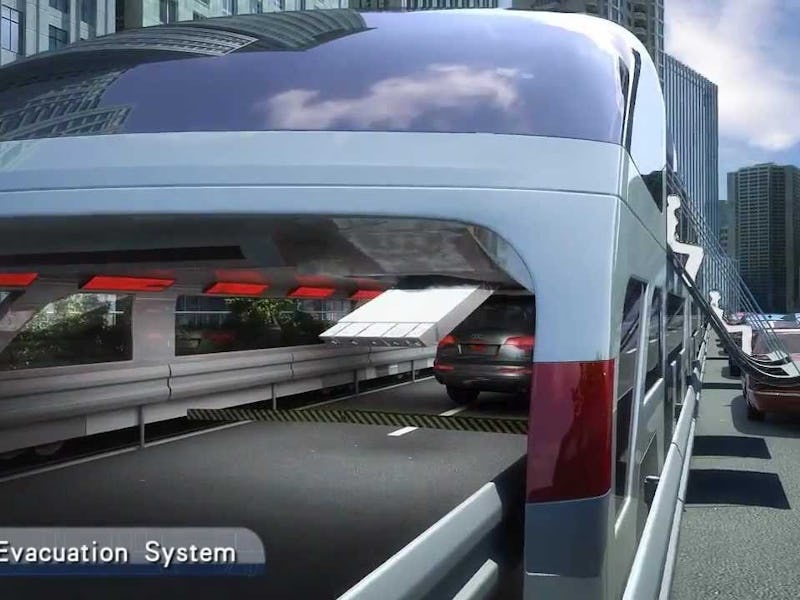China’s straddle bus was hailed as the futuristic fix for the world’s largest nation and its correspondingly enormous traffic woes. The elevated electric bus, which was only tested for eight months before developers gave up, could move over the traffic, earning it the moniker of “car-eating bus.”
But the vehicle, which has been the subject of skepticism since day one in July 2016, was sent to its retirement home June 21. Its paltry 1,000-foot long track will be removed by the end of the month, according to state media China News.
The death of the straddling bus might be a sobering reminder of the trials and tribulations of transportation and innovation, if anyone had believed in it in the first place. But unlike the rise of electric vehicles or even the promise of the Hyperloop, this “car eater” was always an outlandish idea — even in the mind of its creator. Here, we remember its rise and fall.
It would have worked like this.
February, 1969
The idea for an elevated bus was first dreamed up by Los Angeles-based architect Craig Hodgetts, now known as the influential founder of the California Institute of the Arts. Back in 1969, his Landliner concept made the cover of the newly-founded New York magazine.
The Landliner on the cover of the February 24, 1969, edition of 'New York' magazine.
The magazine described the Landliner in this way:
Both bus and Landliner are traveling at 60 miles an hour, their speeds locked together by computer; then a great claw descends from the Landliner to “swallow” the bus. Once inside, the passengers disembark and enjoy the facilities. Since these buses circle a city picking up commuters, driving the car to the station and leaving it all day will be a thing of the past.
But this vision never came to pass.
August, 2010
For decades, Hodgetts’s Landliner concept sat entirely dormant. In the summer of 2010, however, Chinese developers first proposed the idea of building and testing a real car-eating bus. The developers cited the growth of China’s major cities — and the growing traffic. By allowing a high-capacity bus to skate over cars, they hoped, quite simply, to move more people faster.
At the time Hodgetts told Curbed he was excited about the news, as he still believed in his idea, though he said he wished his own country would be the ones to make his forward-thinking vision a reality.
But the developer’s plans stalled again — perhaps for good reason.
All of 2016
This was, finally, the year of the straddle bus. That summer, the Transit Elevated Bus Technology Development Company actually [built and tested a $4.5 million prototype]) what could hold a whopping 1,200 passengers.
In August, the bus had its first test run, and the prime minister of India expressed interest in bringing the bad boy to his country.
But things went downhill from there. After seeing reports in the press, Hodgetts, the father of the original Landliner concept, had choice words for the prototype, telling Quartz that it was an “immature project.” Hodgetts and others raised concerns that the height of the bus — under seven feet — would trap many vehicles beneath it, and that drivers in regular cars would struggle to deal with the bus safely, putting everyone on the road at risk.
Eventually, these concerns won out as the fundamental flaws of the car-eater became apparent once it revved its way into the real world.
